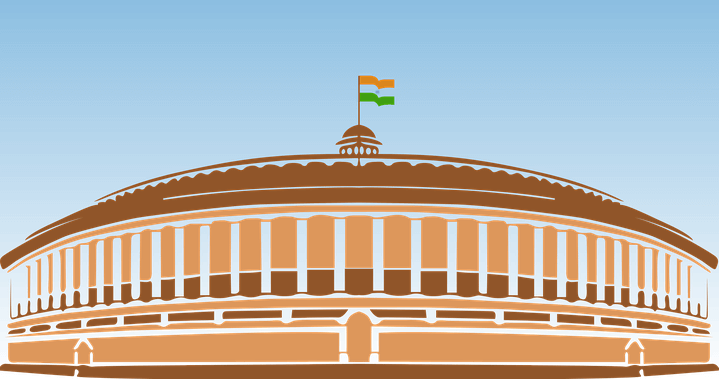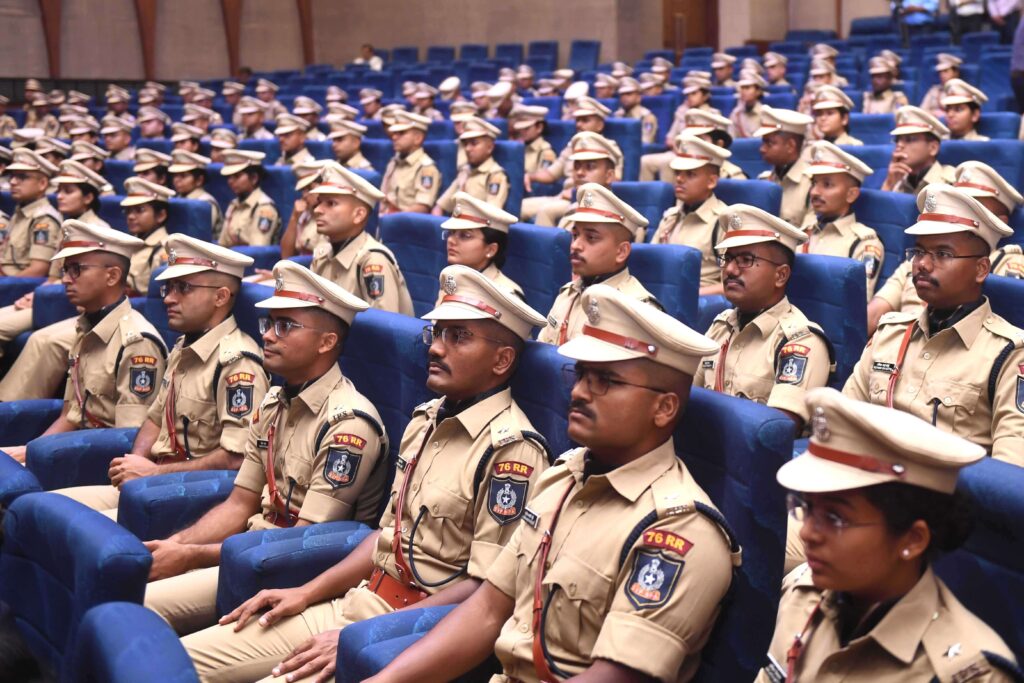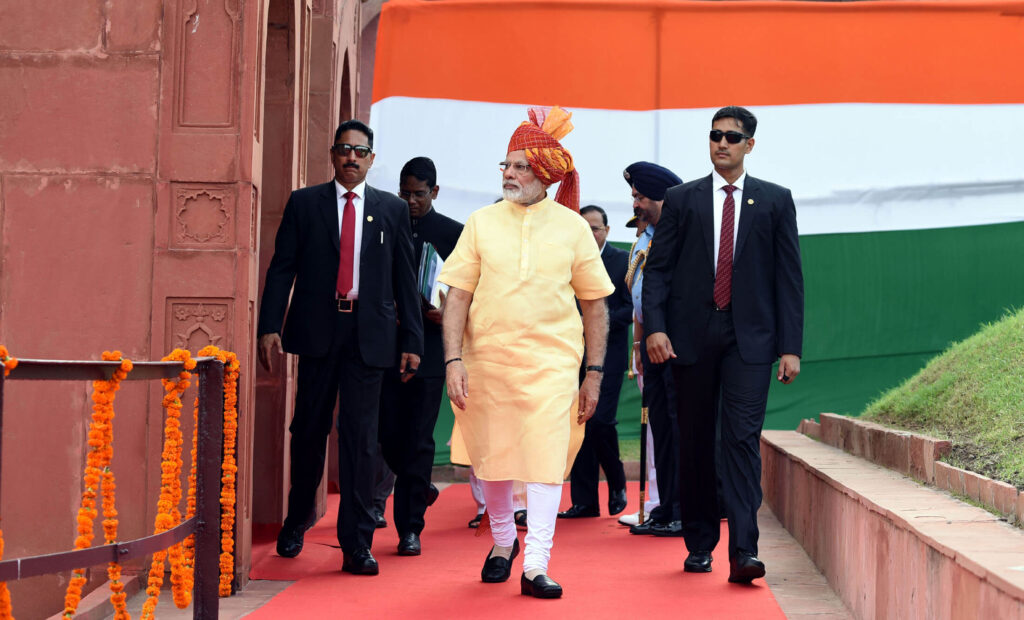“I feel that, for the good of India itself, the admission of natives to high office must be effected by slow degrees. But that, when the fulness of time is come, when the interest of India requires the change, we ought to refuse to make that change lest we should endanger our own power, this is a doctrine of which I cannot think without indignation. Governments, like men, may buy existence too dear.”
— Thomas Babington Macaulay, speech on the India Bill, 1833

Nearly two centuries later, Macaulay’s words echo eerily in the corridors of India’s modern bureaucracy. His anxiety about “endangering power” through the elevation of Indians to high offices seems to have reincarnated — not in London, but within India’s own administrative machinery.
A Long-Awaited Moment of Justice
On May 23, 2025, the Supreme Court of India delivered what may be described as a watershed moment in the history of India’s internal security apparatus. By affirming the Organised Group A Service (OGAS) status of Central Armed Police Forces (CAPF) officers, including batches dating back to 1986, the Court did more than settle an administrative dispute. It corrected a historical anomaly — one that had lingered for nearly four decades, leaving an entire cadre of officers structurally disadvantaged in their own forces.
The Court’s verdict — and the subsequent dismissal of the Government’s review petition — finally recognised CAPF officers as part of organised services “for all purposes.” It was an overdue acknowledgment of the reality that these officers have been leading from the frontlines of India’s internal security, often at great personal cost.

Yet, the decision has been met with curious resistance in certain quarters, especially from sections of the Indian Police Service (IPS) fraternity, whose members continue to head these forces on deputation. The argument, presented with polished subtlety, is that cadre officers lack the “coordination capabilities” and “inter-agency vision” that IPS officers bring.
It is a refined echo of an old prejudice — that those who actually fight the battles may not be suited to lead them.
Coordination vs. Competence: The Hollow Debate

If coordination were truly the yardstick of leadership, the CAPFs have demonstrated it time and again — not in conference halls, but on unforgiving terrain.
From the burning deserts of Rajasthan to the dense jungles of Bastar, coordination for the CAPF officer isn’t a theoretical construct — it’s a survival instinct, honed in the heat of live operations.

- During Operation Sindoor, the Border Security Force (BSF) executed seamless coordination with the Army in one of the toughest operational environments, earning 16 gallantry medals for conspicuous bravery, unmatched valour, and teamwork.
- The Central Reserve Police Force (CRPF) and Indo-Tibetan Border Police (ITBP) have displayed exceptional synergy — with Army formations, state police forces, intelligence agencies, and civil administration — in counter-insurgency operations, Left Wing Extremism theatres, border management, and internal security duties.
- The Sashastra Seema Bal (SSB) and Assam Rifles operate in close liaison with civil authorities, intelligence networks, and local communities, proving that true coordination flows from ground experience, not administrative command.
- The Central Industrial Security Force (CISF), in contrast, exemplifies disciplined coordination — securing over 350 critical installations from airports to nuclear plants, and operating in seamless synergy with other uniformed forces, local police, civil administration, intelligence agencies, and private stakeholders.
- CAPFs have ensured peaceful elections across the world’s largest democracy, coordinated with Election Commission, district administrations, and local police, often across multiple states in real time.
- They have stood shoulder to shoulder with the National Disaster Response Force (NDRF), Indian Air Force, and state relief agencies during floods, earthquakes, and cyclones — from Kedarnath to Kerala.
- Internationally, CAPFs have earned global acclaim in UN peacekeeping missions, coordinating with multinational contingents and upholding India’s reputation as a responsible power.

At the heart of it, coordination in CAPFs is not hierarchical but experiential — built through shared hardship, mutual trust, and professional competence. Coordination, therefore, is not a borrowed skill imported from deputationists — it is a lived experience forged on the ground. It cannot happen in air-conditioned review meetings. The cohesion that saves lives in conflict zones emerges from the mutual respect between boots on the ground and the leader who stands among them — not above them. Ironically, the same argument of “coordination” is invoked to deny CAPF cadre officers leadership roles, when they are the very embodiment of coordinated execution on the ground.
Real coordination does not happen because two officers once shared a classroom at the National Police Academy; Ironically, the claim of “superior coordination” rings hollow when inter-state policing, despite being under the same IPS umbrella, often suffers from turf conflicts and communication breakdowns. Coordination, then, is less about uniform and more about ethos, competence, and ownership — values deeply ingrained in the CAPF cadre.
Core Competence: Leadership Born from the Ground Up

True leadership in the CAPFs is not acquired through circulars or courses — it is forged in the field, in the dust, heat, and uncertainty of real operations. A cadre officer’s competence is tested not by theory but by how swiftly he reads the ground, calms panic, and converts chaos into control. He commands composite formations — blending communications, logistics, engineering, medical, and combat elements — often with incomplete intelligence, limited resources, and zero margin for error. In such moments, leadership is not a title; it is instinct guided by experience.
What sets the cadre officer apart is continuity. While deputationists rotate in and out, the cadre officer grows with the force, learns its pulse, and evolves with its doctrine. He knows the terrain, the temperament of his men, and the operational grammar of his organisation — not from reports, but from lived reality. That continuity builds institutional memory and operational intuition — the invisible architecture that sustains discipline and effectiveness in prolonged deployments.

Their competence is equally cognitive: understanding the politics of federal coordination, the ethics of minimum force, and the logistics of sustained operations. They innovate from necessity — refining convoy security drills, counter-IED tactics, and community liaison strategies in ways that textbooks could never teach. Every successful operation, every crisis contained, every life saved is a testimony not to borrowed brilliance but to internal excellence.
This is the kind of competence that can neither be deputed nor replaced. It is homegrown, time-tested, and indispensable — the kind of competence that turns an armed force into an institution, and a uniform into a legacy.
International precedents and what they teach us

International experience only reinforces this truth — that sustainable leadership in uniformed forces emerges not from rotation, but from rootedness. Around the world, home-grown leadership in paramilitary and border forces has strengthened both professionalism and inter-agency collaboration. Israel’s Border Police (Magav) and the United States Border Patrol evolved leadership pipelines that prized internal experience while maintaining structured partnerships with the military, intelligence and local police. The effect was not insularity but a sharper, field-driven doctrine that coordinated effectively with external partners because it had the inside knowledge to do so. These are not perfect analogies: India’s federal reality and diversity are different. But the lesson stands — building expertise within an institution need not mean building walls around it.
The Structural Malaise: Ad-hocism and Neglect

The real story of the CAPF is not one of incompetence but of institutional neglect. For decades, the structural architecture of these forces has been shaped not by professional foresight but by ad-hoc decisions made from afar.
The original four-company structure of battalions has, over the years, morphed into an unscientific seven-company structure, creating rank stagnation, operational overload, and poor command ratios.
A constable, the backbone of the force, till recently was waiting for 18–20 years for his first promotion. Around 80% of CAPF personnel remain deployed in field or non-family locations throughout their careers.
In 2019, the Hon’ble Home Minister Shri Amit Shah announced a compassionate initiative — ensuring every jawan gets 100 days of family life annually. It was a humane and visionary step. Yet, six years later, bureaucratic inertia has kept it largely on paper.

The welfare record speaks for itself. Officers of CRPF were denied Ration Money Allowance till 2019; the Old Pension Scheme (OPS), rightfully applicable to CAPFs as “Armed Forces of the Union,” had to be secured through litigation. Even today, the matter hangs in appeal. These are not minor administrative oversights — they represent a systemic apathy towards those who protect the nation at the cost of their family lives.
If welfare, structure, and morale are in distress, it is because those at the helm for decades lacked either the will or the connection to feel the pulse of the men they commanded.
Perpetual Power and the Colonial Hangover
Here lies the deeper parallel to Macaulay’s century-old reflection. The Government of India Act of 1919, better known as the Montagu–Chelmsford Reforms, had at least the candour to state its objective — “the gradual development of self-governing institutions with a view to the progressive realisation of responsible government in India.”
Even the coloniser recognised, at least rhetorically, the inevitability of transfer of power. But the present resistance to reform — to letting cadre officers lead their own forces — aims for perpetual existence, a mindset that is arguably worse than the coloniser’s.
This is not about individuals; it is about an institutional psychology that fears dilution of power more than dilution of effectiveness.
The Ethos Argument: Why Forces Must Be Led by Their Own

Every military or paramilitary organisation thrives not merely on command but on culture and continuity — the unspoken values that bind men and women in uniform.
The ethos of a force is not a textbook subject taught at an academy; it is absorbed through years of shared hardship, trust, and sacrifice.
A leader who has marched the same terrains, lived the same deprivations, and earned the same respect cannot be replaced by one parachuted in for tenure.
The Indian Coast Guard realised this early — once cadre officers began heading the service, institutional continuity and operational efficiency rose remarkably. The CAPFs deserve no less.
To argue otherwise is to say that those who know the force best are somehow unfit to lead it — a proposition as illogical as it is unjust.
The Vision of a Decolonised Polity

Prime Minister Narendra Modi, in his historic Independence Day address of 2022, invoked the Panch Pran — five resolutions for India’s march to 2047. Prominent among them was the call to “remove any trace of a colonial mindset.”
The Hon’ble Home Minister Amit Shah has repeatedly echoed this vision — emphasising modernisation, welfare, and dignity of all uniformed personnel.
The Supreme Court’s verdict, therefore, is not a challenge to the Government’s vision — it is its natural fulfilment. It empowers the very people who embody that vision daily, in the most testing conditions imaginable.
To resist such progress in the name of “coordination” or “tradition” is to deny the spirit of Panch Pran itself.
Conclusion: The Republic Must Move On

“Propter vitam vivendi perdere causas” — To lose the reason for living, for the sake of staying alive.
Macaulay quoted Juvenal in 1833 to deride the policy of keeping Indians from high office. Nearly two centuries later, the same caution applies to us. To preserve power for its own sake, even at the cost of institutional vitality, is both despicable and absurd.
The Republic cannot afford to live by colonial reflexes when its destiny demands self-confidence. The CAPFs — among the most disciplined, battle-tested, and self-sacrificing forces in the world — have earned not just the right but the responsibility to lead themselves.
To do what is right is not an act of grace, but of justice — it is the Republic maturing into the confidence of its own institutions.


Very well and comprehensively expressed the role played by CAPFs.
You echoed the sentiment of millions of Indians who are being suppressed by colonial mindset of Indians. Even these Indian colonisers are aware that they are not doing what is right, but their selfishness is dragging them to enter the shoes left behind by English colonisers
Excellent article. It has covered nearly all aspects
of CAPF and justified it’s suitability to head the force by own cadre in the interest of the nation and the force.
Well drafted and a cause of CAPF represented. All hope on Indian Administrative machinery to implement judgement on ground in letter and spirit.
A very well narrated facts , truly speaking about role of CAPF . CAPF officials need due recognition at par with other organised cadres . It will enhance morale and motivation while working in most challenging and inhospitable conditions.
A well versed composition which describes the real spirit of the glorious CAPF organisation and it’s privellaged troops presently being deprived and exploited by the parachute officials than of the real ground heroes brought, grown and retires without executing their rich eloquent experiences. There fore it is though delayed but high time to change the command to the well deserved own organisation officers.
The Cabinet Committee had approved the Supreme Court’s decision confirming OGAS status to Central Armed Police Forces (CAPF) group A cadre officers. Implementing this decision will definitely boost the internal security apparatus, enabling it to effectively counter threats from enemies. CAPF officers have been advocating for this change through the courts, and it’s seen as a significant step forward for their service conditions. Well articulated article… thanks.
Very insightful article which brings out the feelings of all CAPF personnel The writer seems to have researched well . Grateful for expressing so cogently.
Dear Niranjana Devi S,
I am pleased to share my thoughts on your thought-provoking article, “From the Raj to the Republic: Decolonising India’s Internal Security Hierarchy”. As a retired Commandant of the Central Armed Police Force (CAPF), I appreciate your courage in tackling a critical issue that has been lingering since India’s independence.
Your article provides a lucid analysis of the colonial legacy that continues to influence India’s internal security architecture. You have effectively highlighted how the existing hierarchy and systems are a relic of the British era, designed to serve the colonial masters rather than the people. Your arguments are well-researched and supported by facts, making a compelling case for reform.
I particularly appreciate your emphasis on the need to decolonize the internal security hierarchy, making it more inclusive, responsive, and accountable to the people. Your suggestions for reforms, such as reorganizing the CAPF, empowering the forces with modern technology, and promoting diversity and inclusivity, are timely and relevant.
As a veteran of the CAPF, I can attest that your observations about the challenges faced by the forces are accurate. The existing systems and structures often hinder our ability to effectively address the complex security threats facing the nation. Your article serves as a wake-up call for policymakers and security experts to rethink the internal security paradigm and work towards creating a more responsive and accountable system.
Your writing style is engaging, and your arguments are logical and well-structured. The article is a valuable contribution to the ongoing discourse on security sector reforms in India.
I recommend this article to all stakeholders, including policymakers, security experts, and the general public. It is essential reading for those who want to understand the need for reforms in India’s internal security hierarchy.
Well done, Niranjana Devi S
Sincerely,
Commandant BP Yadav (Retired)
Central Reserve Police Force (CAPF)
Excellent article.CAPF officers & men have shown expertee in their duties in various field of security be internal or external for Nation. Officers and men are physically, mentally shown bravery since it’s Raising, More then 60 yrs continueing in their field. Where as IPS officers from state join on deputation for few yrs ,their grooming,controlling, managing,,involvement is not at par with CAPF Officers. Govt of India must implement the decision taken by highest court in their favour after through analysing all aspect The performance judged by various Prime Ministers and Ministers time to time and highly appreciated their worthy role
A well drafted and comprehensive article which has elucidated the injustice meted out to the CAPFs by the nexus of Indian bureaucracy in spite of repeated judgements by the Hon’ ble High Courts and Supreme Court in favour of CAPFs by taking lame excuse of coordination. It is High time that the Govt now realise the mistake and allow CAPF officers to grow to lead their respective organisations.